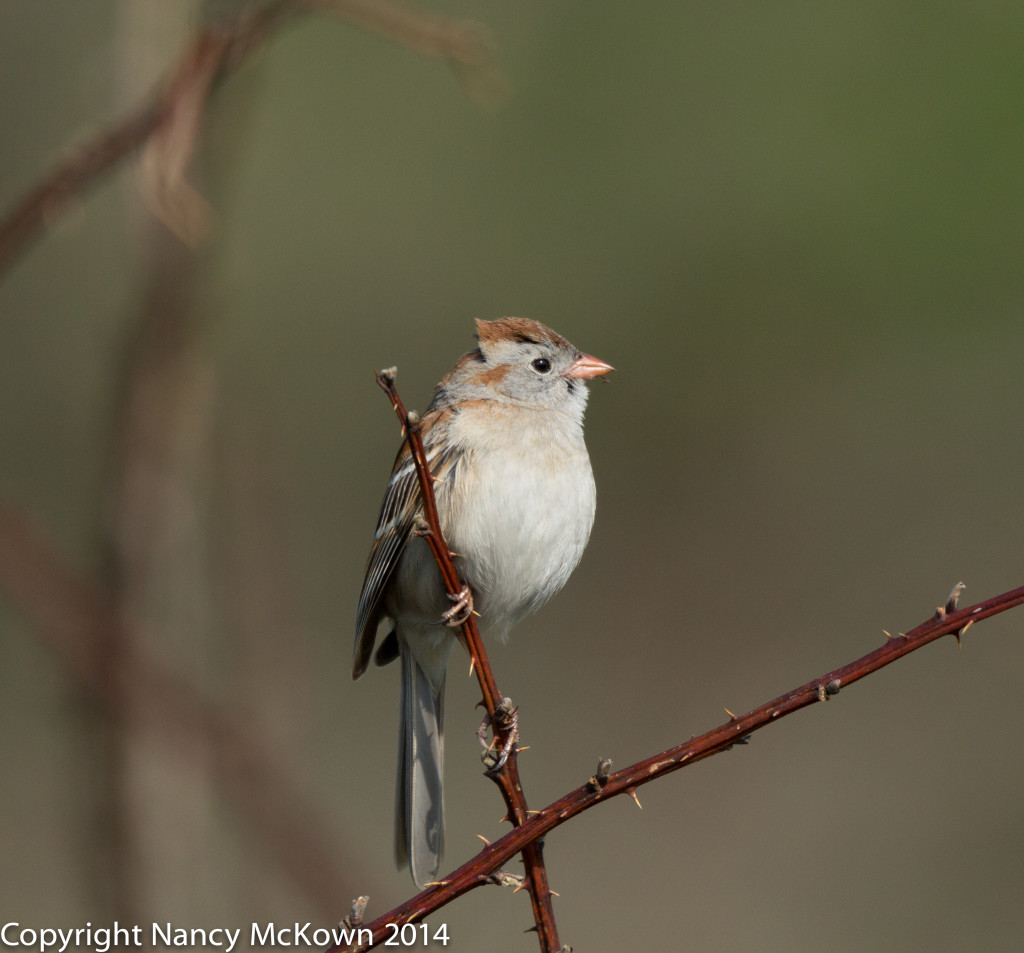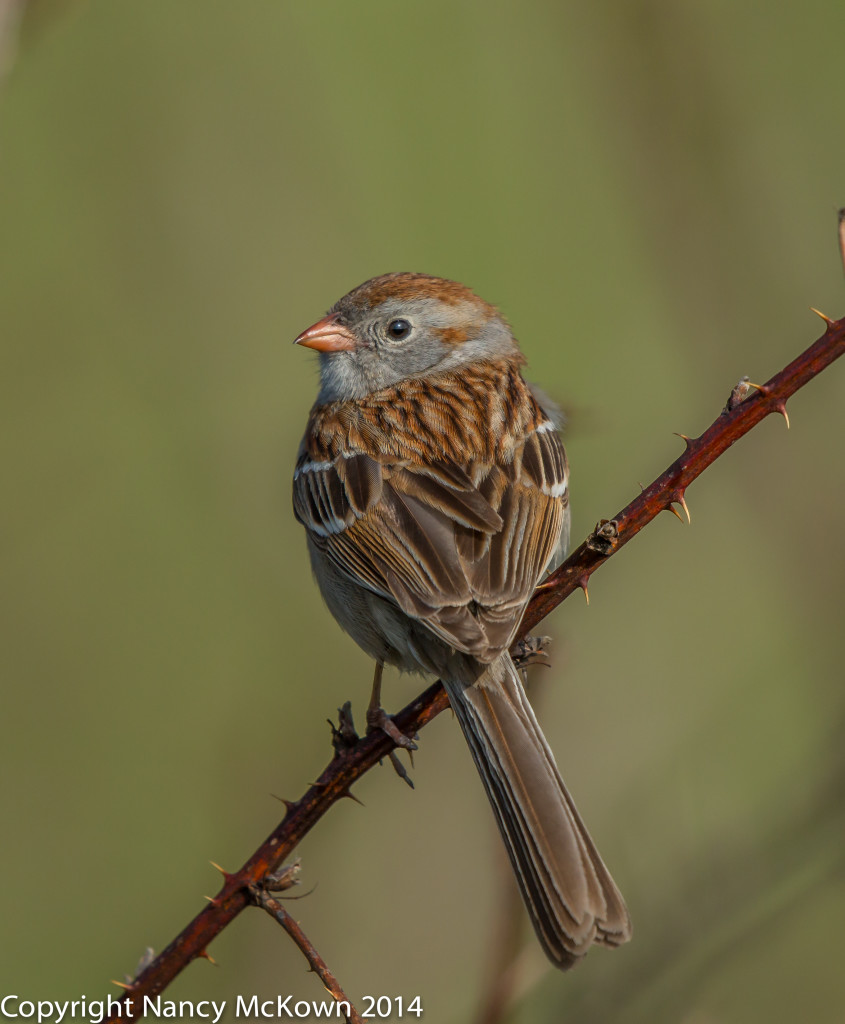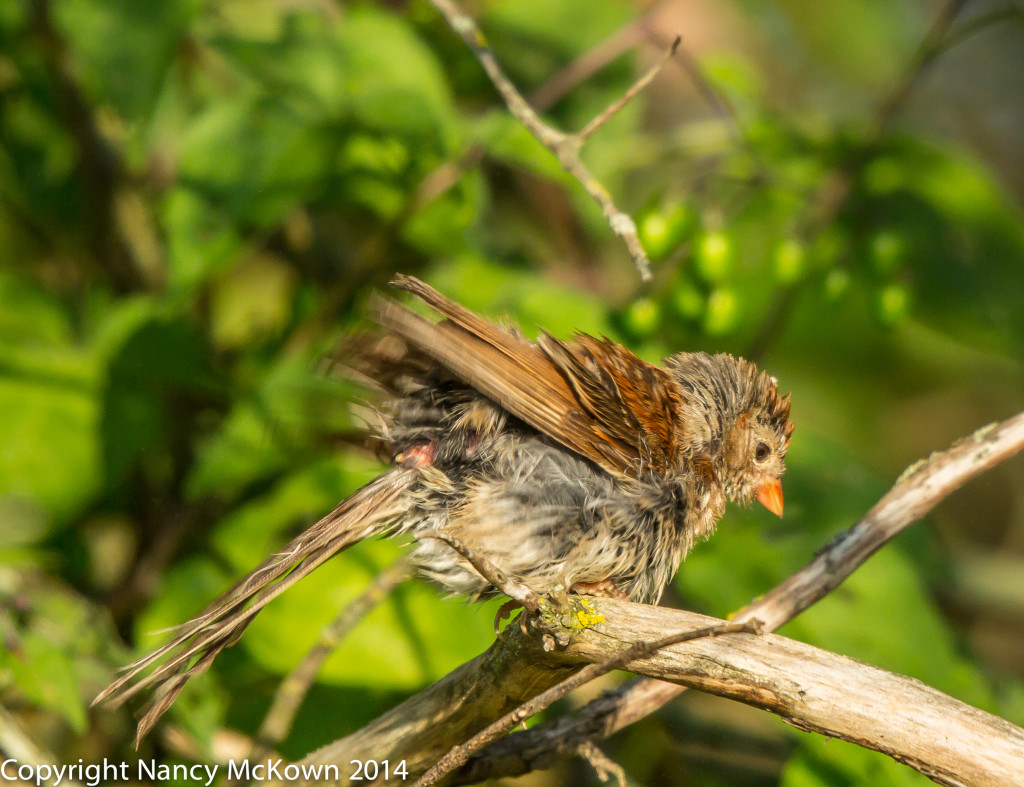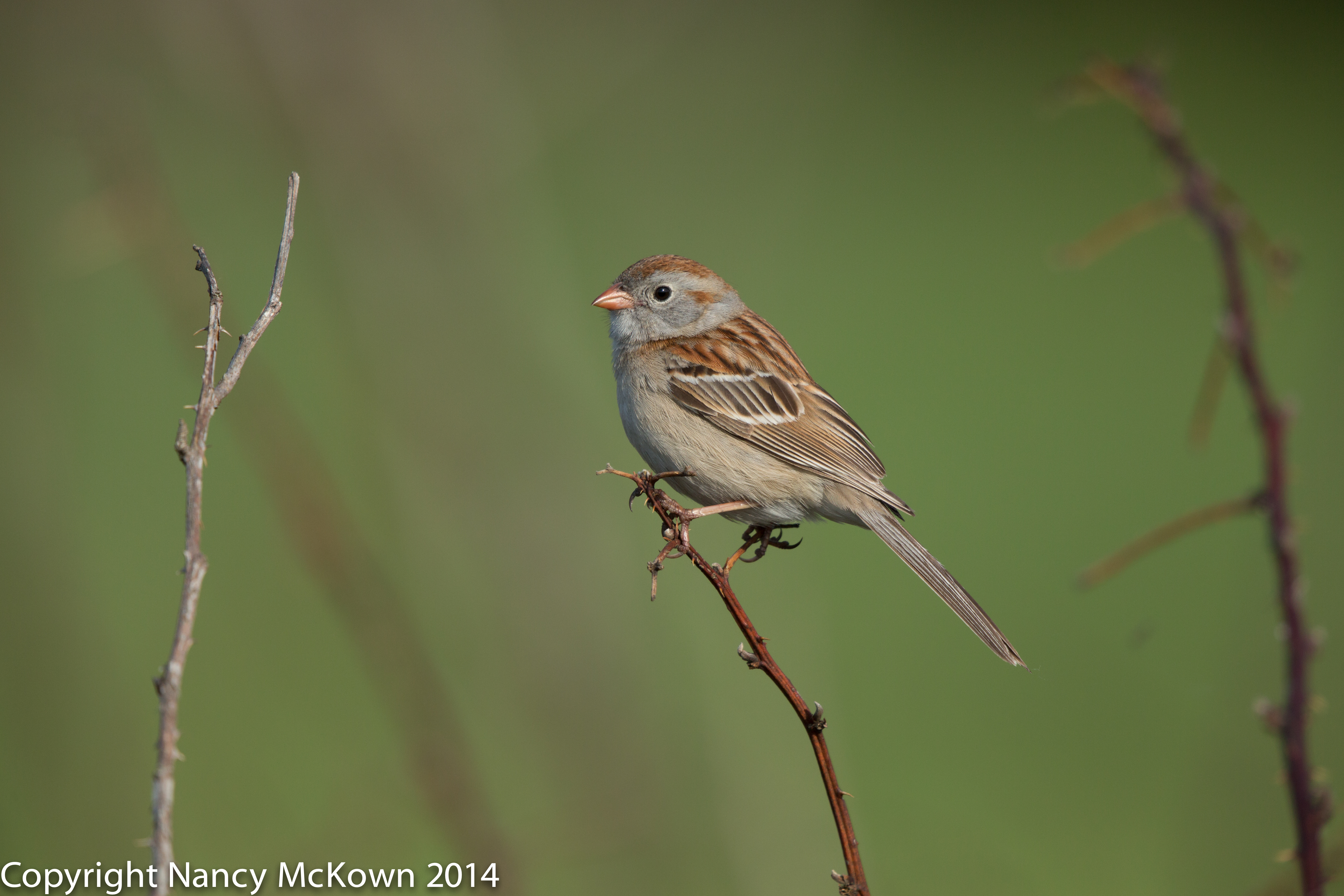Photographing the Grassland Field Sparrow
This gray faced grassland Field Sparrow, with a reddish crown, white eye ring, unstreaked buff breast and distinctive pinky/orange beak is an easy sparrow to identify. It’s one of my favorite birds to photograph because this species doesn’t always hide when spooked. Curiosity gets the better of them, so much so that they are likely to come out into the open when there’s a ruckus.

Field Sparrow Watching Me
For this shoot, I hauled my camera, bags and tripod deep into a grassy, wet field (also, bug spray, bug nets, smart phone, hat, shades, etc). My equipment setup and preparation (not to mention my soaking wet pant legs) must have been just interesting enough for this field sparrow to come in close and in front of the camera to watch me. The early morning light was good, and he chose excellent perches on which to pose. He stayed so long that I was able to move my tripod about and swap out lenses and extenders to experiment with focal length. At the end of the shoot, I thanked him for his cooperation.
This is the type of care-free photography session that gets me thinking about purchasing even more photographic stuff to haul out in the field. This time, my thoughts were on a back-up DSLR camera.

A Digital Camera’s Perceived “Lifetime”
My camera is 2 years old and has 48770 shutter counts. A camera’s “lifetime” is based on its shutter count. The official life expectancy on the shutter on my Canon 5D Mark III DSLR is rated at 150,000 shutter actuations. According to Canon, after I reach 150,000 shots, I can expect shutter wear and tear, slow down and eventual breakdown. I will then have to replace the shutter mechanism, or buy a new camera.
Hypothetically, with only 48770 shutter actuations, there is plenty of life left in my camera. However the “lifetime” shutter count estimates that Canon assigns are only estimates. This camera could out-live me, or crash tomorrow. There is no predicting when the shutter (or mirror, or sensor or other electronics) will fail on my camera.
NOTE: Apps are widely available to determine your camera’s shutter count. I purchased a program called “Shutter Count” for $2.99, available at this link.
Missed Photos
Currently, I have one camera and two fixed long telephoto lenses (300mm and 500mm). If the bird is perched at a distance that is too far or too close, I have to swap out lenses. That takes time and there’s a strong possibility that the bird will fly off before I am operational again. In addition, changing lenses on the fly can often lead to dust accumulation on the camera’s sensor. Having two DSLR cameras, each attached to a lens with a different focal length, would address these problems.
The wrong lens was attached to my camera when I spotted a Bald Eagle on the Lake MI dune. See this link for more information.
Camera #2 – Canon 7D Mark II
I’ve been thinking about purchasing the Canon 7D Mark II camera with a crop 1.6 sensor (22.4 x 15.0 mm). The new technology incorporated into this camera make it a professional’s tool. The reviews on this camera have been excellent.
I have a full sized sensor (36 x 24 mm) on my Canon 5d Mark III DSLR camera. When I attach a 500 mm lens on my Canon 5d Mark III, the focal length remains 500mm. A smaller sized sensor would crop some of the image coming in from the lens. Consequently a camera with a 1.6 sensor attached to a 500mm lens will make the image appear closer, and provide a reach equivalent to 811mm. Extended telephoto reach is very advantageous for a bird photographer.

ISO 1000; f/8; 1/1000 Second
Better Prepared with Two DSLR Cameras
Many other breakdowns and accidents besides shutter failure can leave a photographer without a working camera; and breakdowns and accidents always seem to happen at the worst possible times. Having a second camera to use in parallel with my main camera would help me to be more prepared to go out in the field and photograph birds.
Well, not surprisingly, I’ve talked myself into another expenditure. Fun! 😎









